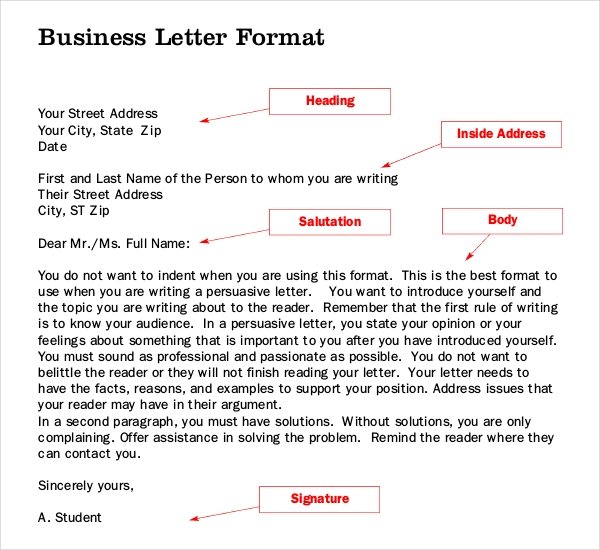When writing a business letter, the layout of your letter is important, so that it will be easy to read and looks professional. So is your use of an appropriate salutation and closing, your spelling and grammar, and the tone you employ.
Here’s information on business letters, including selecting a font, paragraph spacing, formatting, margins, what to include in each paragraph, how to close the letter, and an example of the proper layout for a business letter.
Letter Font and Spacing
- Properly space the layout of the business letters you write, with space between the heading, the greeting, each paragraph, the closing, and your signature.
- Single space your letter and leave a space between each paragraph. When sending typed letters, leave two spaces before and after your written signature.
- Left justify your letter, so that your contact information, the date, the letter, and your signature are all aligned to the left.
- Use a plain font like Arial, Times New Roman, Courier New, Calibri, or Verdana. Make sure that the font size you use is large enough that your reader won’t need to reach for their glasses: the standard font size for these fonts is 10 point or 12 point.

Business Letter Etiquette and Tone
- Salutation: It is still standard to use the recipient’s title (Mr., Mrs., Ms., Dr., Professor, Judge) before their last names in the salutation of formal business correspondence (Example: “Dear Mr. Smith”). The word “Dear” should always precede the recipient’s name; don’t simply use their name by itself as you might do in casual correspondence. By the same token, avoid beginning business correspondence with openings like “Hello,” “Hi,” or “Good morning” – business letters should always begin with “Dear [recipient’s title and name]” unless you use the salutation “To Whom It May Concern” (in instances when you do not know the name of the recipient).
- Closing: Your closing needs to err on the side of the conservative. Acceptable closings to use include: “Sincerely,” “Sincerely yours,” “Best regards,” “Regards,” “Thank you,” “Thank you for your consideration,” “Respectfully,” and “Very Respectfully” (this, often abbreviated “V/R,” is common in military business correspondence). Do not use casual closings like: “Later,” “Cheers,” “Cordially,” “Thanks!,” “TTYL,” or “Warmly.”
- Word Choice and Grammar: Although your word choice for business letters should not be too stilted, flowery, or ornate, you should also avoid using slang, abbreviations/acronyms, emojis, or text-speak. By no means should you use the sentence fragments that are commonly used when texting. Instead, use complete sentences, watching out for comma splices (where two complete sentences are joined by a comma). Proofread carefully for spelling errors and grammatical mistakes.
- Paper: If you are drafting a formal business letter to be mailed as opposed to an email, the paper you use should be a standard white bond paper of a decent weight – don’t use the sort of colored or flamboyant stationery that might be used in marketing “junk mail.” It’s fine to include a simple business logo at the top of the paper.
